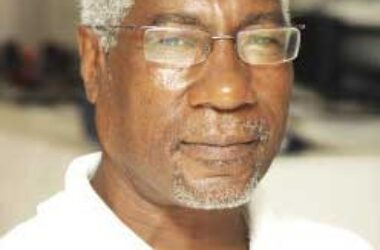FOR centuries, the literature in education has advocated the need for parents to be involved in their children’s education. The literature has shown consistently that parental involvement in their children’s education improves their performance.
Indeed, the Caribbean Examination Council (CXC) has designed a handbook for parents whose children are at the primary level and preparing for the Caribbean Primary Exit Assessment (CPEA). The purpose of the handbook is to assist parents to work effectively with the teachers and their children during the learning process to enhance the performance of those children. The handbook also provides suggestions on the roles and responsibilities of parents as effective partners in education.
The handbook is divided into four parts A, B, C and D. Part A provides an overview of and the rationale for the CPEA. Part B provides details about the CPEA Assessment Model. Part C outlines the roles and responsibilities of parents as key partners in ensuring pupils’ success. And Part D contains testimonials from teachers, parents and pupils who have been following the Caribbean Primary Exit Assessment initiative. The handbook could be downloaded from the Caribbean Examination Council’s Website for free.
Part A introduces CPEA as an assessment of key literacies possessed by all pupils who are preparing to leave the Primary Schools and getting ready to enter Secondary School. The CPEA focusses on a set of literacies which are common to all primary curricula and which are necessary for pupils to make the best or most effective use of the resources made available to them. By literacies I mean students developing knowledge and skills in listening, reading, viewing, speaking and creating oral, print, visual and digital texts, and using language for different purposes. Some readers may think that I missed writing. Actually creating print is, indeed, writing. In my thesis as a teacher in training several decades ago I referred to the literacies as the four vocabularies.
Earlier I referred to ‘primary curricular’. By curricular I mean, the various subjects taken at a school or learning institution. These include Mathematics, Language, Civics and the Sciences, all of which take its root from learning theories expressed by philosophers such as Jean Piaget, Jerome Bruner and Lev Vygotsky.
Now because the literacies are spread across the various subjects, the CPEA will focus on the assessment of literacies instead of subject areas.
As a regional assessment offered by CXC, the CPEA will provide the foundation for a seamless transition to secondary education and will make it possible to move across the Caribbean Region with the same qualification. It also means that a learner would be able to move from one of the CPEA islands to another and fit comfortably.
The CPEA will assist with quality measures in the primary education system; it will also offer a common measure
The CPEA will assist with quality measures in the primary education system; it will also offer a common measure across schools and territories in the region; and CPEA will respond to the calls for a regional assessment at the primary level.
Part B emphasizes the Assessment Model for the CPEA. It answers the question, how will my child be assessed in the CPEA.
The CPEA is based on solid educational principles and includes formative or inter assessment and summative or external assessment activities. The Formative assessment activities will be conducted in class to help improve your child’s or children’s performance. The summative assessment activities will help to provide about how far your child has reached in his or her learning journey.
Now what kind of activities that will be included in the CPEA programme? Internal, with teacher and pupils: Project activities, Book Report activities; Writing Portfolio activities, Can-do-skills activities; Pupil Tests activities. Internal with teacher groups includes Teacher Prepared Tests in English, Mathematics, Science and Social Studies. The information collected from the activities listed under internal will be used by your child’s or children’s teacher to improve his or her performance in school.
External activities would include tests which would be prepared by the CXC in English, Mathematics, Science and Social Studies.
Now parents may be wondering what the external examination would look like. The external examination will assess the three core literacies namely, English, Mathematics and Science.
Mathematics: Duration is 75 minutes; the number of questions will be 50; the types of questions will be Multiple Choice; the exam will be administered in one day; the month of administration will be May; and the mathematics exam will begin at 9:00 a.m.
English: Duration is 75 minutes; the number of questions will be 50; the types of questions will be Multiple Choice; the exam will be administered in one day,that is the same day with the mathematics exam; the month of administration will be May; and the English exam will begin at 10:45 a.m.
Integrated Science: Duration is 75 minutes; the number of questions will be 50; the types of questions will be Multiple Choice; the exam will be administered in one day, that is the same day with the Mathematics and English exam; the month of administration will be May; and the Integrated Science exam will begin at12:45 p.m.
Very simply, the external examination will be administered in one day. The Mathematics exam will begin at 9:00 a.m. and end at 10:15 a.m. There will be a 20 minute break after which the students will be settled to start the English exam which begins at 10:45 a.m. and ends at 12:00 noon. Again there will be a 40 minute break for lunch after which the students will be resettled for the final paper which will begin at 12:45 p.m. and ends at 2:00.p.m. followed by dismissal.
To be continued next week.













Interesting